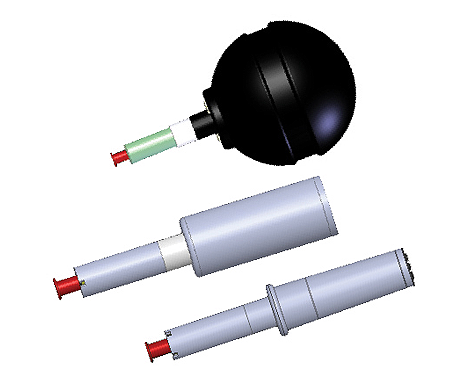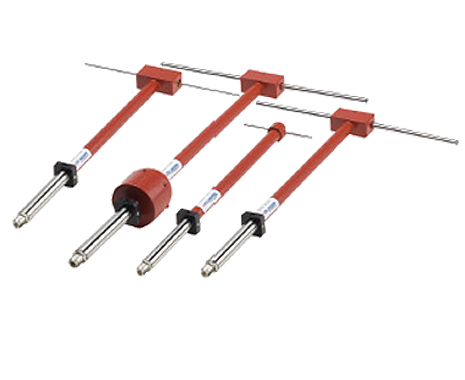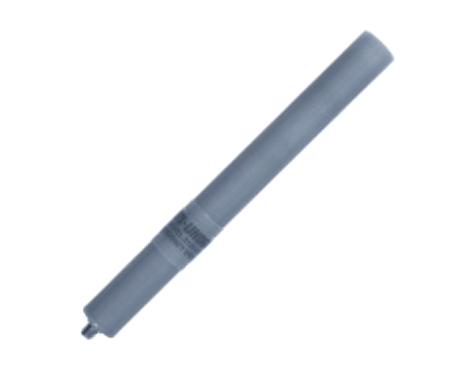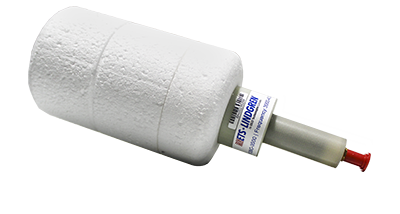3127 Magnetic Dipole Antenna

ETS-Lindgren's Series 3127 Resonant Loops are designed to meet the Cellular Telecommunication and Internet Association's (CTIA) +/- 0.1 dB symmetry requirement for ripple test measurements at the labeled center frequency.
ETS-Lindgren's Series 3127 Resonant Loops are designed to meet the Cellular Telecommunication and Internet Association's (CTIA) +/- 0.1 dB symmetry requirement for ripple test measurements at the labeled center frequency. These omnidirectional antennas have a magnetic dipole pattern approaching that of a half-wave resonant electric dipole. The pattern produced has the same peak and null orientation as that of a sleeve dipole oriented along the same axis, but with the directions of the electric and magnetic fields reversed. That is, the electric field vector along the azimuth is perpendicular to the axis and the magnetic field vector is parallel to the axis. The loop design allows the antenna to be end-fed to avoid cable and feedpoint interactions that interfere with the symmetry of the antenna. Integral quarter-wave chokes and/or ferrite loading (depending on frequency range) also help to reduce cable interaction. This design also provides exceptional symmetry to meet the CTIA criteria for ripple test antennas.
All 3127 resonant loops are designed with better than +/- 0.1 dB symmetry (0.2 dB peak-to-null) in at least a +/- 5 MHz band around the labeled center frequency. VSWR is less than 5: 1 at the resonant frequency, which is slightly higher than the labeled symmetry frequency. The loops have a nominal 50 impedance, a maximum continuous transmit power of one watt, and are equipped with a female SMA connector.
The loops are calibrated using an A2LA accredited process with a typical measurement uncertainty on the order of +/- 1.0 dB at the center frequency. During the calibration process, the dipoles are also certified to meet the +/- 0.1 dB symmetry required for use in the ripple test specified in the CTIA's Over-The-Air Performance Test Plan, in a +/- 5 MHz band around the labeled center frequency. For accurate gain values to perform range calibration, the ETS-Lindgren Model 3126 Precision Reference Sleeve Dipoles are recommended.
- Range of Frequencies to Cover Wireless Device Bands
- Designed for CTIA Ripple Test
- Meets CTIA +/- 0.1 dB Symmetry Requirement
| Model | Mounting Diameter | Loop Housing Diameter | Overall Length |
| 3127-3600 | 1.9cm (0.75in) | 3.7cm (1.46in) | 16.3cm(6.5in) |
| 3127-5500 | 1.9cm (0.75in) | 2.8cm (1.1in) | 16.3cm (6.5in) |
| All Other 3127 Models | 1.9cm (0.75in) | 12.7cm (5.0in) | 21.6cm (8.5in) |
| Model | Frequency Range |
| 3127-450 | 445 MHz to 455 MHz |
| 3127-617 | 612 MHz to 622 MHz |
| 3127-700 | 695 MHz to 705 MHz |
| 3127-836 | 831 MHz to 841 MHz |
| 3127-850 | 845 MHz to 855 MHz |
| 3127-880 | 875 MHz to 885 MHz |
| 3127-920 | 915 MHz to 925 MHz |
| 3127-1575 | 1570 MHz to 1580 MHz |
| 3127-1732 | 1727 MHz to 1737 MHz |
| 3127-1747 | 1742 MHz to 1752 MHz |
| 3127-1768 | 1763 MHz to 1773 MHz |
| 3127-1790 | 1785 MHz to 1795 MHz |
| 3127-1800 | 1875 MHz to 1885 MHz |
| 3127-1862 | 1863 MHz to 1873 MHz |
| 3127-1880 | 1875 MHz to 1885 MHz |
| 3127-1950 | 1945 MHz to 1955 MHz |
| 3127-2100 | 2095 MHz to 2105 MHz |
| 3127-2132 | 2127 MHz to 2137 MHz |
| 3127-2140 | 2135 MHZ to 2145 MHz |
| 3127-2150 | 2145 MHz to 2155 MHz |
| 3127-2450 | 2445 MHz to 2455 MHz |
| 3127-2535 | 2530 MHz to 2540 MHz |
| 3127-2600 | 2595 MHz to 2605 MHz |
| 3127-2655 | 2650 MHz to 2660 MHz |
| 3127-3600 | 3595 MHz to 3605 MHz |
| 3127-5500 | 5495 MHz to 5505 MHz |


